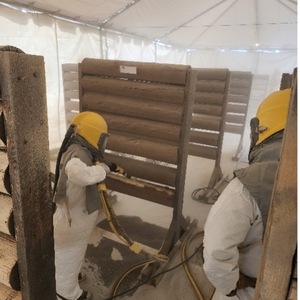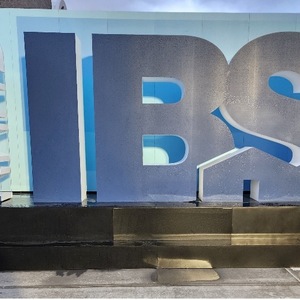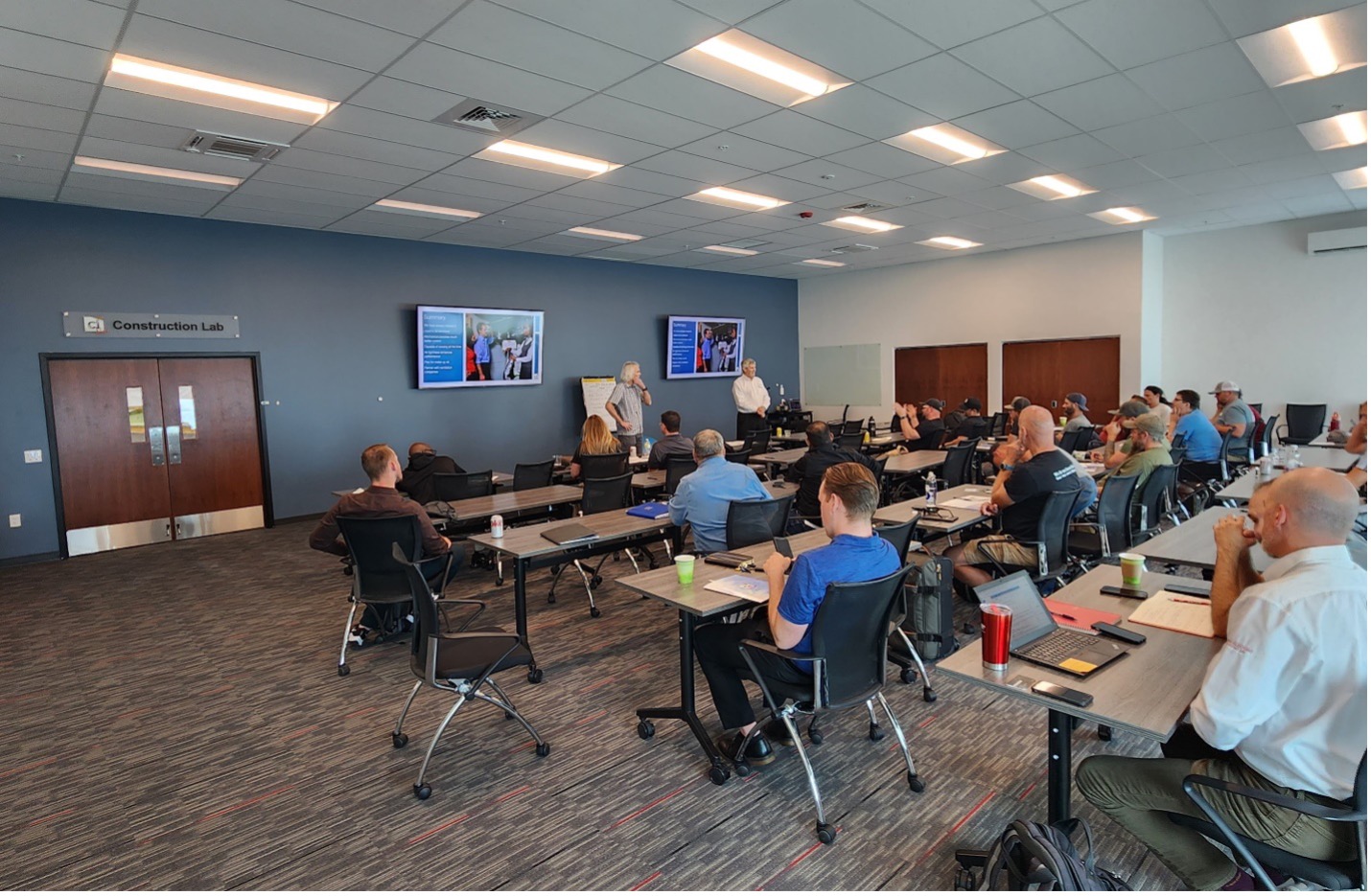
From July 31 through August 2, 2023, I had the opportunity to attend the 25th annual Westford Symposium on Building Science, better known as Building Science Summer Camp, the host of which is the illustrious Dr. Joseph Lstiburek, principal of Building Science Corporation. Building science enthusiasts from all corners of the construction industry attended the invitation-only annual event, which included presentations from some of the best building scientists, architects, and builders in the industry—people like Katrin Kingenberg, co-founder and executive director of Passive House Institute U.S. (PHIUS), who gave a talk on the past, present, and future of Passive House. Building Science Corporation’s Kohta Ueno discussed multifamily buildings and summer humidity. And my favorite was Mark Rosenbaum’s talk, “Monitoring and Using Data to Solve Problems.” A total of 14 courses were presented to all the attendees in one giant classroom over the three-day event.
Although the education was top-notch, and was the main reason I attended, this post isn’t about what I learned. Instead, I’ll write about what it was like to attend my first Building Science Summer Camp.
To Joe’s I go
The event location, Westford, MA, is a suburb of Boston. It can be tough to get from Logan International Airport to Westford. Rideshare services and taxis don’t typically service Westford from Logan. Luckily, I was able to bum a ride with Travis Brungardt and Jake Bruton, whose flights from Missouri arrived about the same time as mine did. Lesson No. 1: Either rent a car (and get punished in the Boston traffic) or hire a professional ride service for transportation to the event.
A veteran attendee told me to show up the day before classes started and get over to Joe’s house for the pre-education festivities. I’m glad I took that advice. Shuttle buses were our transportation between the area motels and Joe’s house. There is some parking available in his backyard, but shuttles are recommended.
When we arrived, Joe’s wife, Betsy, met us and reported that heavy rains the previous day had flooded the backyard, causing several vehicles to get stuck in the mud. The beer kegs had been tucked under the roof eaves, and the bulk water pouring off the roof had turned on the beer taps, resulting in a pool of beer-water on the deck. It was an exciting start to the event.
Builder Ben Bogie and I found a couple chairs at a table under one of the dozens of tents on the property. We sat with Dr. Allison Bailes and Martin Holladay, who in my opinion, are two of the best contributors to GBA. (I was a little awestruck and completely forgot to get a photo.) I had conversations with many other people, including BS* + Beer Show hosts Emily Mottram, Ben Bogie, Michael Maines, and Travis Brungardt.
I heard rumors about how good the food is, and they are all true—from all-you-can eat seafood to authentic BBQ to some of the tastiest salad dishes I’ve ever had. The lines for the food were long, but no one seemed to mind because the conversations while waiting were as good as the food. Plus, in addition to beer, there was a fully stocked bar; and inside a live band played. It seemed the musicians were mostly attendees, and they were very good. This networking get-together happened the day before the event as well as after each day of talks.
By invite only
The reason for this dense concentration of leading industry experts is that the event is invite-only. The most common way to get an invitation is to know a Summer Camp veteran. It took my asking a few people before I was invited. Joe explained that once you are on “the list,” you get an invite every year (as long as you don’t do something to get blacklisted). Joe’s goal is 80% former attendees and 20% newbies. He likes to encourage younger people to attend.
Another way is to get Joe’s attention by being the best in your field. That was certainly the case for presenter Dr. Stephanie Taylor, a former medical doctor, non-practicing architect, and founder of Building4Health. Her topic was human health, indoor air quality, and how a building can affect both. Getting Joe’s attention by being the best in your field is certainly the hardest way to get an invite.
Upon reflection
After the event, I was left with a few questions. Why did Joe hold the first Summer Camp? How has it evolved? Who have been the most influential speakers or attendees through the years? To answer these questions, I emailed him.
Among the most influential speakers and attendees, he named Gus Handegord, the first-ever presenter and Joe’s mentor. Gus is a Canadian building scientist, educator, and one of the authors of Building Science for Cold Climates. Don Gatley made Joe’s list; he is the author of Fundamentals in Psychrometrics and the building scientist who taught Joe that it’s okay to use a little bit of heat to control condensation, or as Joe put it, “to stay out of trouble.”
Rene Dupuis was another on the list. According to Joe, he was “the greatest roofing person of all time.” Rene’s son taught a class this year titled “Roofs and Pressures,” in which he discussed roofing failures. Another of Joe’s mentors, John Timusk, was included too. He is another building scientist and educator from Canada. Joe went on for several minutes telling stories and giving praise to these pioneers.

To the question Why start the symposium?, Joe replied it was to provide quality educational opportunities for his staff at Building Science Corporation. He wasn’t happy with the conventional model used for most conferences—multiple short presentations that happen simultaneously so attendees are forced to choose between talks they want to hear. Joe wanted a collective experience for a deep dive into the subject matter that everyone could hear.
So, he went about creating his own conference. He sent letters to 20 people who he thought would be interested in hearing Gus Handegord talk. He asked for $200 each, and figured he would break even on the event. Many dozens of people showed up. Not looking to make a profit, Joe tried to refund some of the proceeds, but instead he was encouraged to provide food and drink for everyone. He grilled burgers and hot dogs in his backyard for a day of networking, eating, and drinking—a tradition that has spanned 25 years.
Joe also talked about his mentors, the continued evolution of Summer Camp, and the value of learning from older-generation experts. “I want young people to learn something from the older ones before they die,” he said. “That’s my idea of diversity.”
Videos of all presentations from the 25th Annual Westford Symposium on Building Science will be available for free at Building Science Corporation by mid-September.
________________________________________________________________________
Randy Williams is a builder and energy rater based in Grand Rapids, Minnesota.
Weekly Newsletter
Get building science and energy efficiency advice, plus special offers, in your inbox.














3 Comments
Randy,
What a great event with the who's who of building science. Thanks for describing it all.
Good overview, Randy! It was great to see you there. I also had to beg my way in last year but I don't plan to miss another one.
And what about our punishing ride back to Logan?
Log in or create an account to post a comment.
Sign up Log in